Cervical Injuries
The cervical spine; is made up of 7 delicate vertebral segments, 8 paired spinal nerves, richly innervated with ligament & muscle stabilizers, housing the top of the spinal cord and part of the brainstem. This means even the smallest of cervical injuries are far more complex than just a rye-neck, whiplash, or muscle strain diagnosis.
Trauma to the neck will not only cause musculoskeletal and neural tissue insult to the involved joint complexes but also impair sensorimotor control, predisposing patients to acute on chronic episodes of pain and/or dysfunction.
Patients presenting with cervical injury may have signs and symptoms of:
- Pain (sharp, dull, throbbing, radiating, localised, wide-spread)
- Stiffness
- Locking
- Catching
- Spasming
- Movement restriction
- Clicking
- Grinding/Gritty sounds
The common diagnoses for injuries of the cervical spine include but are not limited to;
- Disc injury
- Facet joint
- Overlying muscle tissue strains
- Neural impingement syndromes
- Ligament tears and/or strains
Two likely complicating and/or predisposing factors of cervical injuries are osteoarthritis and habitual cervical self-manipulation;
Osteoarthritis;
A normal wear & tear process that can be managed with joint mobility exercises.
Cervical Self-Manipulation;
Patients who self-manipulate their cervical spine are often those who will present with recurring episodes of acute neck pain.
Patients will often crack, twist, over-stretch or manipulate the cervical spine because they feel tension and/or discomfort, likely related to their habitual postures and poor movement patterns.
By manipulating and moving a joint beyond its physiological limit, patients can achieve temporary relief as a rush of ‘feel-good’ hormones are released; endorphins, enkephalins, serotonin.
The effect of these hormones, much like a drug, wears off and with no modification to the initial cause of the neck tension, the euphoric feeling is short-lived,
The issue is, they commonly manipulate the same joint complex each time (C5/6 left facet joint for example) making that one joint hypermobile and the body will react with a protective response by increasing the tone of the muscles surrounding and overlying the hypermobile joint/s.
The patient then feels an increase in general neck tension, so their instinctive response is to self-manipulate the neck again to achieve the same sense of relief.
It’s a vicious cycle that typically continues for years, irritating the adjacent soft tissue structures and potentially resulting in early arthritic changes if left unaddressed.
How do we help?
Patient education is essential.
Assess and improve the function of the joints above and below the joint/s the patient regularly manipulates.
Introduce self-management strategies like; postural retraining, joint mobilisation exercises, neck stabilization exercises.
Depending on the specific diagnosis, management of treatable injuries should focus not only on addressing the pain and/or dysfunction at the site pain/injury but also assessing and improving the functionality of the thoracic spine, and bilateral shoulder girdles. This is achieved via a conservative hands-on approach involving;
- Passive joint mobilisation
- Targeted adjustments
- Soft tissue therapy
- Progressive rehabilitation
- Date May 12, 2019
- Tags Cervical, Chiropractic, Chiropractor, Desk postures, Disc injury, Facet joint, Osteoarthritis, Tension, Thoracic, Treatment, Upper Crossed Syndrome

